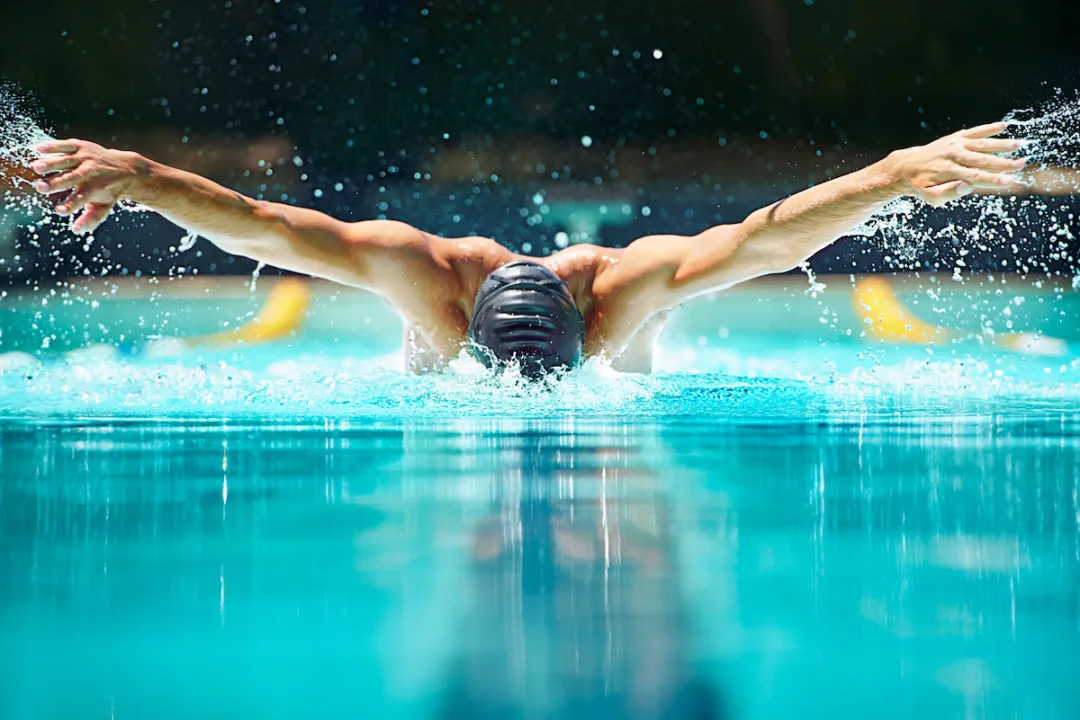How to swim butterfly
Swimming butterfly can help you develop a better and more efficient freestyle swim stroke, but it's not an easy stroke to master. Dan Bullock explains how to swim butterfly

Butterfly is usually the second fastest of the four strokes, and perhaps the most graceful and exciting to watch when performed well.
It was first developed in the 1930s when breaststrokers were looking for something to give them an edge in their races. The stroke builds strength in many of the key swimming muscles – deltoids, trapezius, biceps and triceps.
It’s also great for building core strength, which is beneficial across the three sports of triathlon.
But butterfly isn’t easy to learn, as it requires a certain amount of speed and momentum for the stroke to ‘work’.
At slow speeds it appears to stumble along, so we have numerous drills to help us break the fly down into its component parts, which allows us to practise them individually.
How do you swim butterfly?
Two leg kicks are to be performed to each complete arm cycle making coordination and timing of great importance.
What should my body position be in butterfly?
A fluid, shallow wave-like action throughout the body (known as the undulation) keeps the body moving forward.
Going forwards is the key here so remember: if the up and down action of the body is excessive, you’ll slow down as drag increases significantly.
Good fly swimmers will keep the head low and chin tucked in so that the mouth barely clears the water when breathing.
What do I do with my legs in butterfly?
Kept together, rhythmically driving up and down, powered from the hips. A bent knee position on the downbeat will enable the shins and tops of the feet to drive water backwards, helping to shunt you forwards.
Strong core and abs will help with this movement, as will loose ankles. Practising with a monofin can be great fun and hugely beneficial.
How do I use my arms in butterfly?
A symmetrical double arm recovery is sought above the surface – the hands need to exit and re-enter the water together at the same time.
Trajectory over the surface and under the body should be matched in terms of pathway and speed.
Good shoulder flexibility is needed for this one as you attempt to keep the elbows high during the recovery to ensure the hands clear the water.
How do I set up the catch in butterfly?
The first part of the underwater pull phase is slightly wider than that of your front crawl. For those taught the old-fashioned question mark/keyhole pull shape on front crawl, it’s fine to use those same powerful sweeps on the fly.
After an initial out-sweep of the hands after entry, they are then brought back under the chest, providing forward propulsion as they push back down to the hips.
A strong finish with a slight rounding out motion at the hips will help create momentum to make the tricky and difficult recovery portion of the stroke a little easier.
How does it feel when you get butterfly right?
A smooth undulation to the stroke that should feel like one continuous movement. Until the breathing and kick come together, the stroke will feel like it’s disjointed and performed with two separate movements.
How to progress your butterfly stroke
A handy session to help you develop your butterfly stroke
4 x 75m, rest 30secs with fins. Swum as:
25m fly kick on your back, arms outstretched, upper arms tight to your ears.
25m of three strokes left arm, three strokes right arm, three strokes full stroke.
25m ‘tri-fly’ (fly legs and front crawl arms) or full-stroke fly if ready to give it a go.
Top image credit: Getty Images




